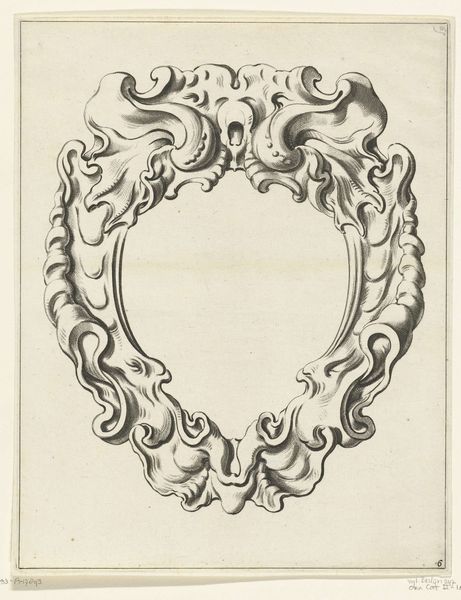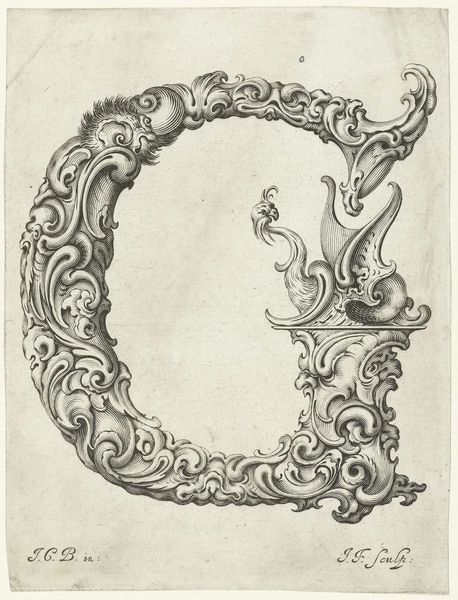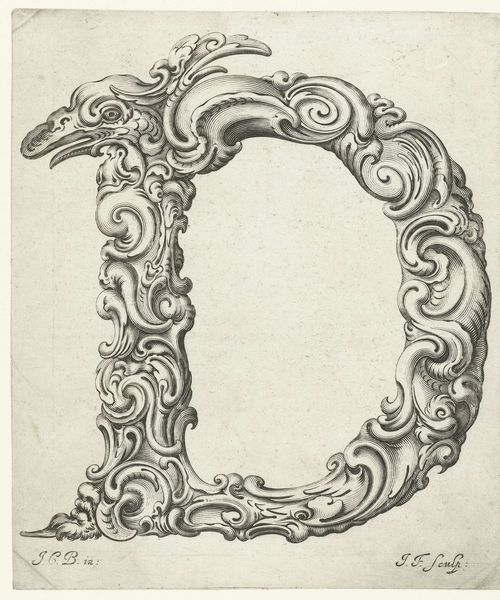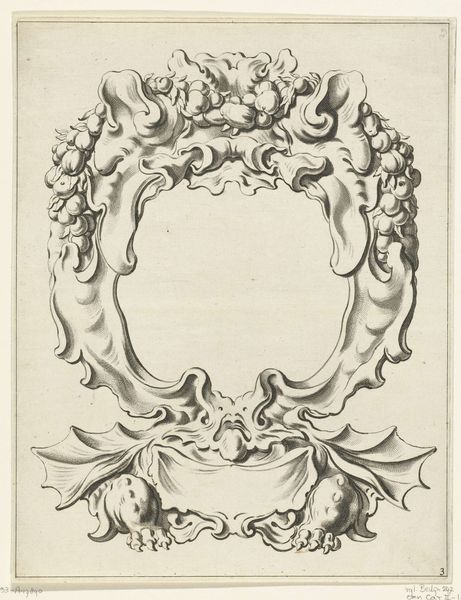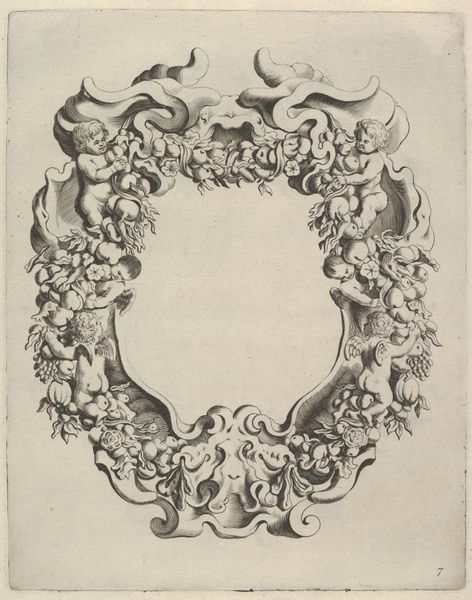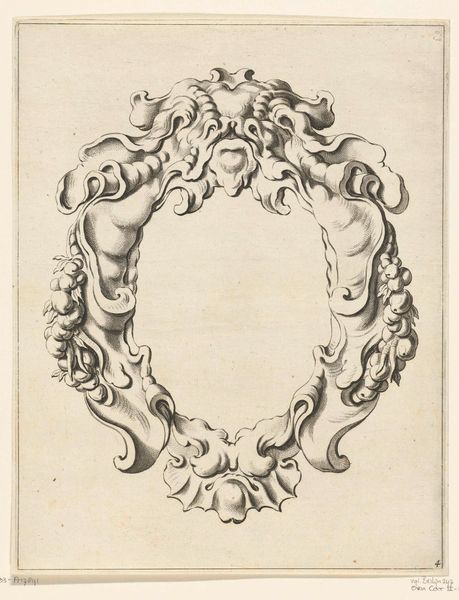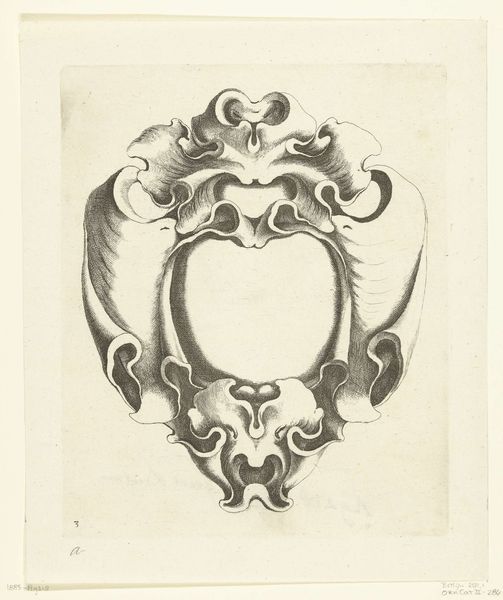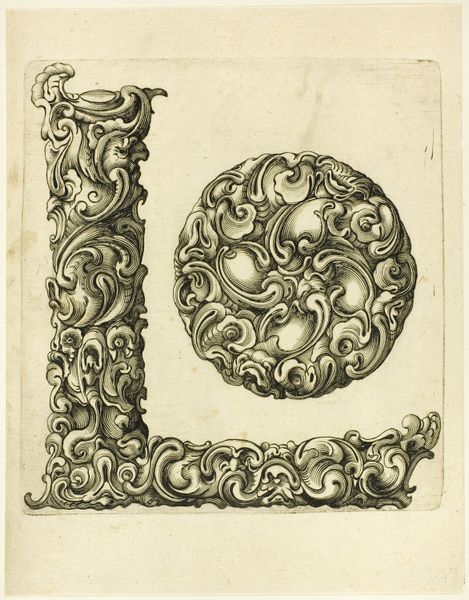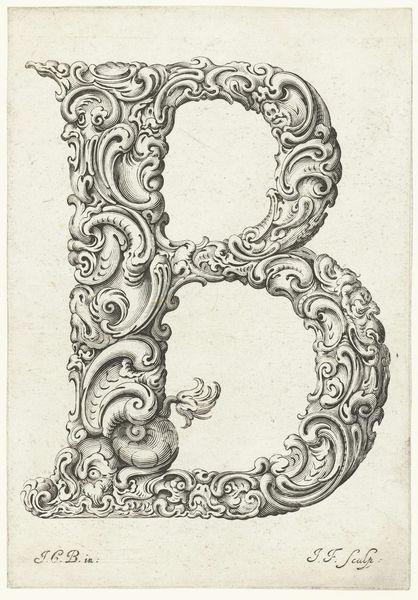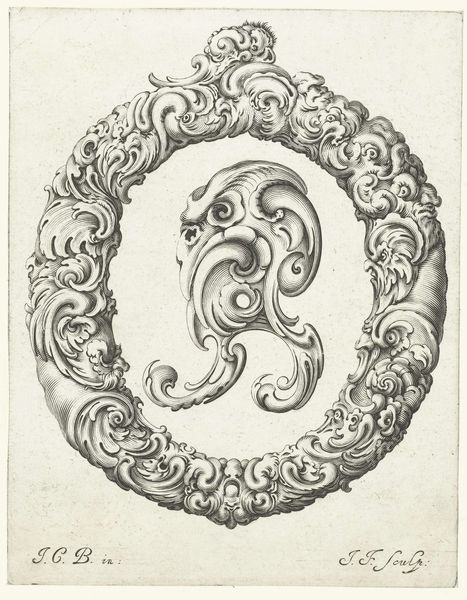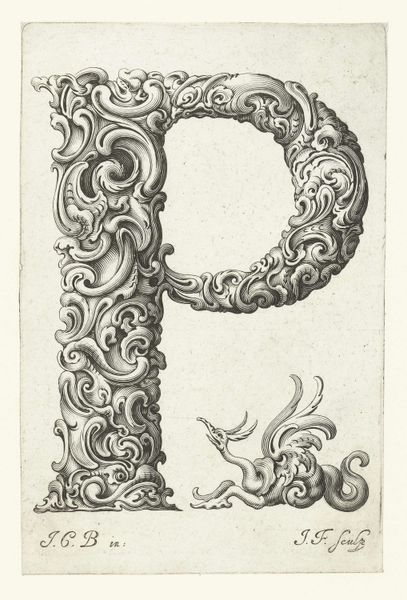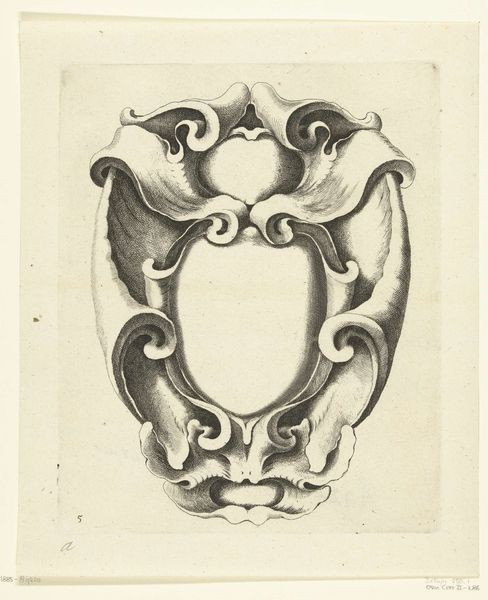
print, engraving
#
allegory
#
baroque
# print
#
figuration
#
line
#
engraving
Dimensions: height 253 mm, width 198 mm
Copyright: Rijks Museum: Open Domain
Editor: Here we have "Cartouche with auricular ornament and six children," a 1655 engraving by Pieter Hendricksz. Schut. The frame is playful and elaborate, full of cherubic figures. How do you interpret the symbolism within this ornamental design? Curator: Well, looking through a contemporary lens, how might we unpack the imagery of cherubs intertwined with abundant fruits within the framework of seventeenth-century Dutch society? Consider, for instance, the implications of idealized childhood depicted alongside symbols of wealth and prosperity in a colonial context. What ideologies do you think are at play? Editor: I hadn’t thought about it in those terms. I suppose the cherubs represent innocence, but placing them in a context of colonialism adds a layer of complexity about the exploitation of innocence. What about the idea of religious power, is it relevant? Curator: Absolutely. The Baroque style often served as a visual language for power, both secular and religious. How do you see the dynamics of power reflected or perhaps subverted, within the context of the print's function and distribution? Was it accessible to all? Did it reinforce existing social hierarchies? Editor: I see your point. It makes me wonder about the intended audience and how they would have understood these symbols. It seems to reinforce social status more than question it. Curator: Exactly. The piece becomes not just a pretty picture, but a document reflecting and reinforcing a specific social order. Exploring these kinds of nuances is vital to understanding the layers of meaning within art. Editor: Thanks, this changed the way I see it completely. Curator: Indeed, thinking critically reveals hidden dimensions in artwork, connecting the visual to larger societal questions.
Comments
No comments
Be the first to comment and join the conversation on the ultimate creative platform.
